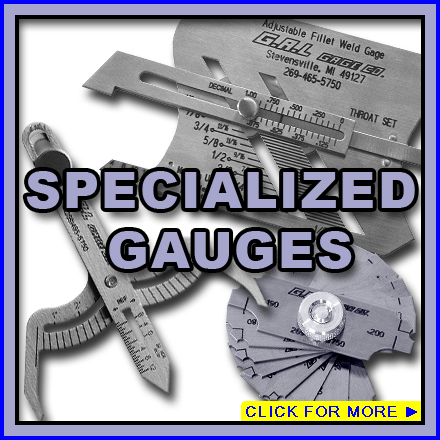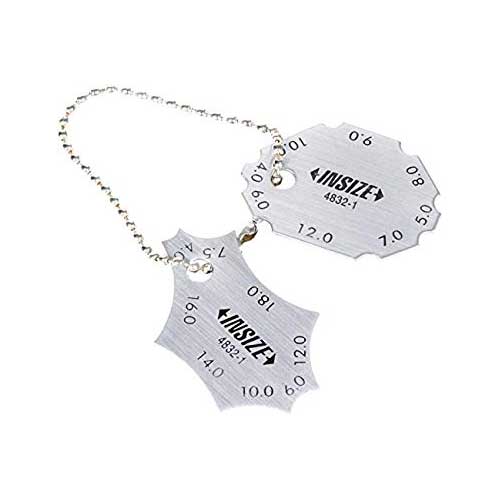Innovative Devices and Methods for Accurate Gauge Fillet Weld Measurements
Innovative Devices and Methods for Accurate Gauge Fillet Weld Measurements
Blog Article
Fillet Weld Style Methods: Optimizing Joint Performance and Aesthetics for Structural Honesty
In the world of architectural engineering and manufacture, the value of fillet weld style techniques can not be overemphasized. By carefully considering aspects such as weld account optimization, material option, joint preparation techniques, welding procedure effectiveness, and aesthetic improvement methods, designers and producers can accomplish a harmonious balance in between performance and look in their bonded frameworks.
Weld Profile Optimization


Accomplishing an optimum weld profile involves a meticulous factor to consider of aspects such as product density, joint arrangement, welding setting, and preferred welding speed. Additionally, the choice of proper welding specifications, such as voltage, current, and travel rate, is fundamental in managing the form and measurements of the fillet weld. Utilizing innovative welding techniques, such as pulse welding or robot welding, can even more refine the weld account to fulfill particular design needs and high quality standards.
In significance, weld account optimization is a basic facet of fillet weld design that straight affects the general efficiency and integrity of welded joints in architectural applications.
Material Choice Considerations
When taking into consideration material selection for fillet weld layout, the compatibility of the base steels is a crucial element affecting the structural stability of the joint. It is important to pick products that not only weld with each other efficiently however also have comparable mechanical properties to guarantee the load is uniformly distributed in between the weld and the base steels. Welding products with significantly different properties can result in issues such as tension focus, early joint failing, or fracturing.
Furthermore, the environment in which the welded structure will certainly run should be taken into consideration when choosing products. Variables like corrosion resistance, temperature level fluctuations, and exposure to chemicals can all influence the longevity and performance of the weld joint. By picking materials that are ideal for the intended application and setting, the general resilience and integrity of the bonded joint can be substantially improved.
Consequently, complete consideration of material compatibility and ecological aspects is paramount in making certain the weld joint's toughness, resilience, and total architectural integrity.

Joint Prep Work Methods
Thinking about the important role material option plays in ensuring the architectural honesty of fillet weld joints, it is necessary to implement specific joint preparation strategies that maximize the link between the base metals. Joint prep work is a critical step that page straight affects visit this site right here the top quality and stamina of the weld. One essential technique is the cleaning of base steels to remove any impurities like rust, oil, or paint that can endanger the weld's honesty. This can be attained with methods such as grinding, cable cleaning, or chemical cleansing.
Furthermore, appropriate fit-up of the joint is important to make sure uniform distribution of the welding material and protect against problems like incomplete infiltration or too much build-up. Beveling the sides of the base metals can create a groove that enables deeper weld penetration and a more powerful bond. Additionally, tack welding the components in area prior to the final weld assists preserve alignment and lessens distortion during the welding procedure. By meticulously adhering to these joint preparation techniques, welders can boost the total efficiency and looks of fillet weld joints while guaranteeing structural stability.
Welding Process Performance
Reliable welding procedures are vital for attaining optimum performance and top quality in fillet weld fabrication. Processes like gas metal arc welding (GMAW) and flux-cored arc welding (FCAW) are generally utilized for fillet welds due to their convenience and rate.
Additionally, ensuring appropriate equipment setup and maintenance is critical for reliable welding. Routine calibration of welding equipments, inspection of consumables, and maintenance of soldering iron can protect against downtime and rework, ultimately conserving time and resources. Furthermore, utilizing skilled welders with expertise in the particular welding procedure being used can considerably affect efficiency. Well-trained welders are extra adept at changing criteria, fixing problems, and keeping regular weld high quality.
Aesthetic Improvement Techniques
To enhance the top quality of fillet weld manufacture, executing visual improvement techniques can play a critical duty in ensuring precision and accuracy throughout the welding process. Aesthetic aids such as weld dimension assesses and amplifying lenses can aid in assessing weld profiles and measurements accurately. By integrating try this out these aesthetic enhancement techniques right into the welding process, welders can accomplish not just structurally sound fillet welds but also visually appealing results that meet market criteria.

Final Thought
Finally, enhancing fillet weld layout involves mindful consideration of weld profile, material selection, joint preparation, welding procedure performance, and visual improvement techniques. By implementing these methods, structural integrity can be enhanced while likewise accomplishing aesthetic appeal. It is essential to focus on both efficiency and looks in fillet weld layout to make certain the total top quality and longevity of the joint.
By carefully taking into consideration variables such as weld account optimization, material option, joint preparation strategies, welding procedure performance, and aesthetic improvement designers, techniques and producers can achieve a harmonious balance in between functionality and appearance in their welded structures.In the realm of fillet weld style, enhancing the weld profile plays an important function in making certain structural honesty and performance. The weld account, which consists of the size and form of the weld cross-section, directly impacts the circulation of stress and load-bearing capability within the joint. It is essential to select products that not only weld together successfully however additionally have comparable mechanical properties to guarantee the lots is equally dispersed between the base and the weld metals - Gauge Fillet Weld.In verdict, optimizing fillet weld style includes cautious consideration of weld profile, product option, joint prep work, welding procedure performance, and visual enhancement techniques
Report this page